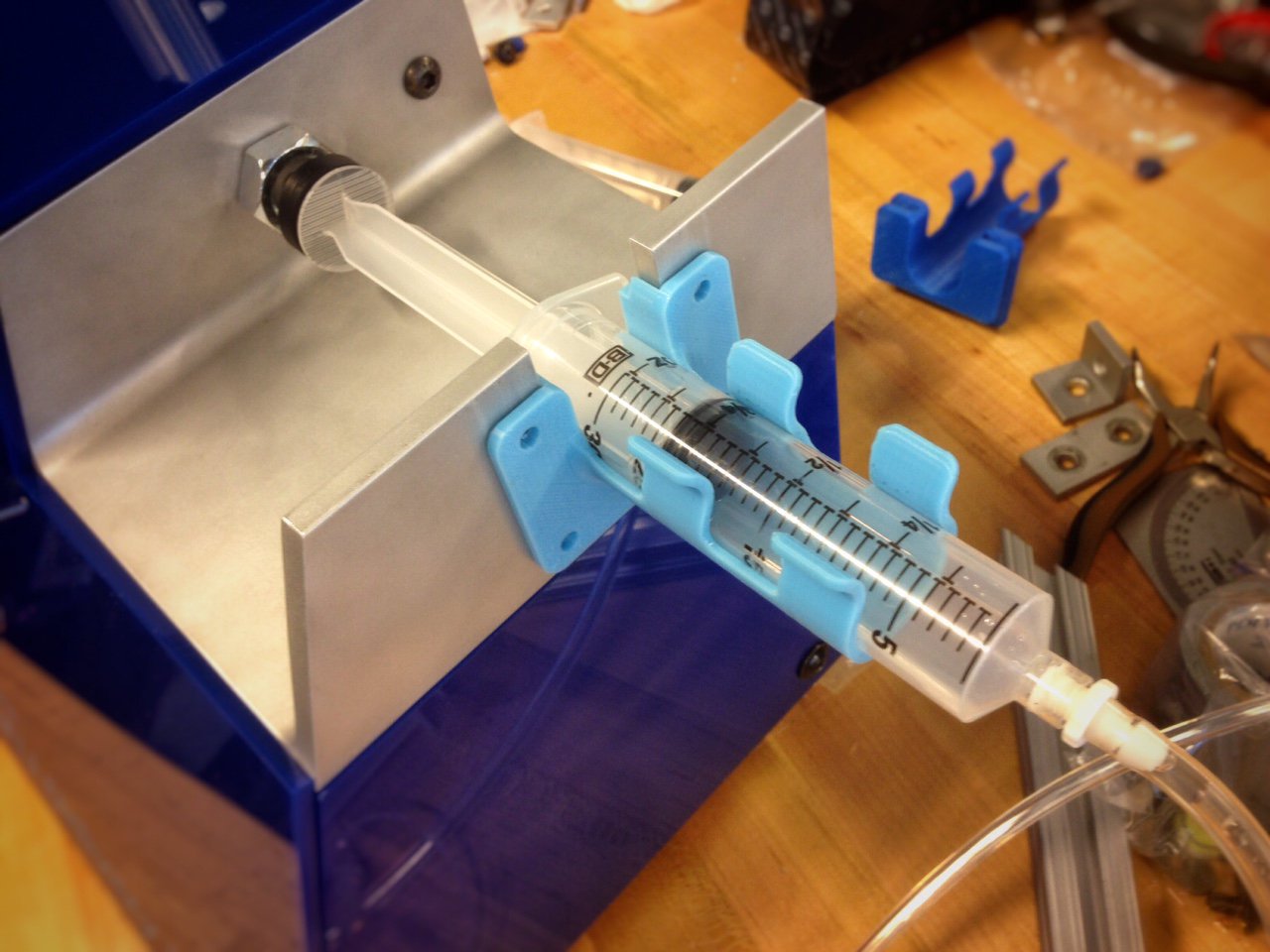One of the biggest challenges we face at PATH is creating lifesaving solutions that already exist. If that sounds odd, let me explain: The medical equipment that many take for granted here in Seattle may not be appropriate for all locations around the world. There’s a real need for durable, low-cost equipment that doesn’t rely on a source of power. Reimagining existing solutions can make a big difference when it comes to saving lives.
So when a local doctor challenged us to devise a simple, low-cost, rugged infusion pump for low-resource settings that could deliver medicines intravenously without electricity or batteries, I said, “Let’s meet.”
A doctor identifies a pressing need
During our conversation, Dr. Karl Weyrauch told me he’d witnessed cases in Rwanda where children ended up with dangerous bone infections because of simple scrapes or injuries. Without access to medications, these infections could lead to tragic consequences, including amputation or a child dying. He believed that an appropriate infusion pump could deliver the medicine children needed to fight their infections.
But there was an issue: In the US, an infusion pump is a common technology used to intravenously deliver medications, fluids, and nutrition. But to be feasible in the locations where Dr. Weyrauch worked, a pump had to function without relying on a consistent source of electricity or battery replacements. It also had to be very low-cost, rugged, and not require expensive components.

Mike Eisenstein sits at his workbench with a collection of infusion pump prototypes. Photo: PATH/Tom Furtwangler.
As we researched how to develop a device to meet the needs Dr. Weyrauch described, other applications were presented to us. For instance, Dr. Anthony Roche at the University of Washington thought our infusion device might also reliably deliver anesthesia to patients in low-resource-setting operating rooms.
The more we explored, the more needs we saw. Our novel infusion pump could provide a range of medications, as well as nutrition and hydration treatment, with immense potential to save millions of lives—from newborns to adults.
A passion for hard work and big impact
The PATH shop team and I got to work developing prototypes, motivated by the impact we could make to address thousands of preventable newborn and child deaths. Over the next couple of years, for each hour we spent on the pump in the shop, another hour was spent working during lunch. In short, the infusion pump became our passion project.

“In some ways, it was a ‘choose your own adventure’ project. We had freedom and ownership to leapfrog from one prototype to the next.”— James Bauer, RELI Delivery System team member. Photo: PATH/Tom Furtwangler.
Our goal was to develop a sustainable platform technology. A low-cost system without proprietary or electrical components or software; a simple, but sophisticated device. Also, the pump had to be reusable with variable flow rates that could be adjusted for each patient’s treatment—while delivering medicine or fluids. For example, fine-tuning the treatment needs of a small child with just a twist of a knob. This was exactly what Dr. Anthony Roche said was needed to successfully deliver treatments in low-resource settings.
A bicycle pump for hours of power
From gravity-based to spring-loaded to pneumatic, our early prototypes were powered by a variety of ways to achieve flow rates. In the end, we landed on a basic and novel approach to power the device: A hand-powered bicycle pump.

“One of the ‘aha’ moments came when we realized how to use pressure to drive a syringe plunger at a constant velocity, providing a constant flow rate to the patient.”—Mike Eisenstein. Photo: PATH/Tom Furtwangler.
With only a few pumps of the bicycle pump, our prototype proved it could power a consistent delivery rate over the equivalent of one shift at a clinic. This is what became the RELI Delivery System, short for reusable, electricity-free, low-cost, infusion delivery system.
I’m incredibly excited about this technology. And it’s clear that others are too. Out of a pool of 650 original candidates, the RELI Delivery System, along with two other PATH innovations, received Saving Lives at Birth seed awards. RELI also won an honorary Peer Choice Award.
Join us as we take the next steps
PATH staff will use the seed money that RELI won to visit health care settings in Rwanda and Uganda. We’ll find out how people might use the RELI Delivery System and receive feedback on our approach.
But it takes more than passion, effort, and seed money to develop technologies like our bicycle pump–powered infusion pump. This is where you step in.
You can help advance our RELI Delivery System—and dozens of other technologies and products—to get them into the hands of people who need them. When you make a gift to PATH, you fuel creativity and collaboration that make life healthier for women and children around the world.
All of us at PATH firmly believe that everyone, no matter where they live, should have access to technologies and medicines that ensure the greatest chance at living a full and healthy life. I hope you’ll join us in supporting PATH.
We’re reaching out to people around the world to help complete the design of this low-cost infusion pump. Contribute your design, visit Autode.sk/PATHchallenge.
